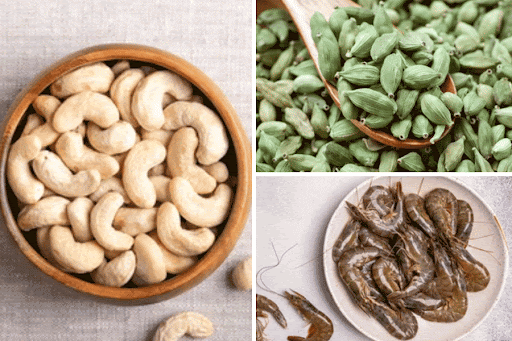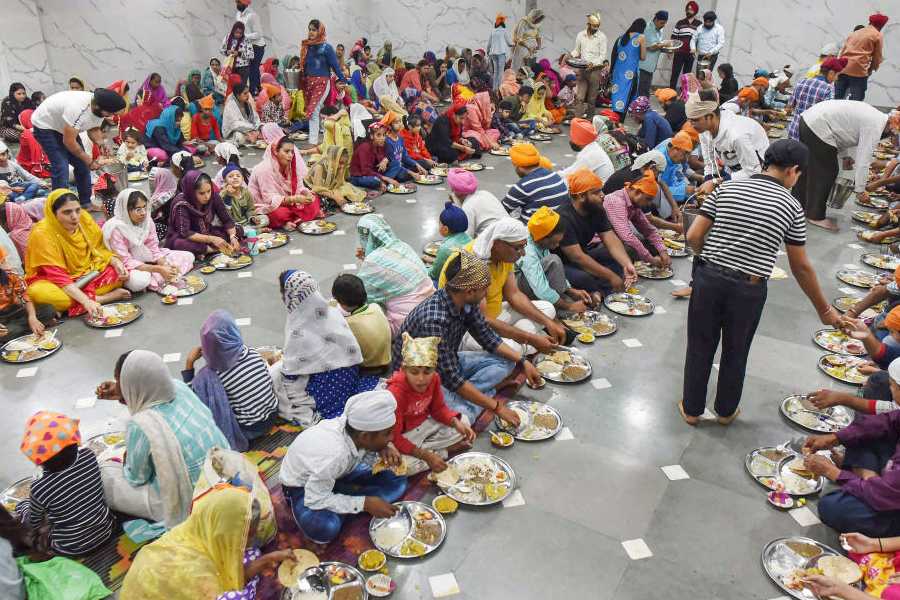 |
Your best friend has just declared she’s getting married. Naturally you want to gift her something special. You pop in at the jewellers’ and, boy, are you amazed! “Think of betelnuts seasoned and finely chiselled to bring out the inner texture capped with gold and strung together with glassbeads,” says Arundhati Gupta, spokesperson for the jewellery shop, A. Sirkar. A perfectly funky gift for your friend considering she was the first to colour her hair red when the trend set in.
Of late, working Indian women have been spoilt for choice as far as jewellery goes. You no longer have to invest in traditional heavy gold jewellery that you bring out from your locker only during weddings. Says Gupta, “The variety on offer is mind-boggling. We use amber, blue ceramic pieces from Rajasthan, sandalwood seeds, gulmohar seeds and much more.”
She points out there is an interesting story to amber. “Amber is actually a kind of glue which spreads out on the forest floor. When there is a tectonic shift of plates, this layer of amber is gradually fossilised and finally turns opaque,” she explains.
And in case you thought such funky jewellery was limited to Saturday night-outs or a girlie party, you are wrong. Says Shailendra Mishra, who heads Oyzterbay, a jewellery shop in Park Street, “Footfalls go up during Dhanteras, Valentine’s Day and weddings.”
There is reason enough for that. As Brinda Ganguly Sarkar, proprietor of The Gold Factory, a retail chain of gold jewellery points out, “Women today don’t want to be weighed down by heavy gold jewellery even in weddings. So they strike a balance, teaming up chunky gold pieces with other stuff.” In fact, with diamonds becoming more affordable and easy to maintain, an increasing number of working women are taking to it. “A pair of diamond studs could now cost around Rs 3,000,” says Sarkar. And the best part is, as Varda Goenka, owner of Diagold, a retail chain of jewellery points out, “You don’t need to have any knowledge about diamonds. All you have to do is make sure that you’re buying your stuff from a certified jeweller. In fact, he can even offer you amazing buy-back policies in case you want to invest in something more fancy later on,” she claims. Small wonder, then, white is the new gold.
Another good thing is that today just about any type of natural stone can either be simulated or created in the laboratory. And jewellers make use of simulated or lab-grown gem stones instead of the real thing for the sake of cost, quality and size.
Simulated diamonds, for instance, work out cheaper. As to quality, colour is an evidence of a quality stone. For coloured gem stones, rich, deep colours often indicate better quality. But the advantage with lab or simulated stones is that the colours can be predetermined.
For many jewellery lovers, bigger is better when it comes to stones. With the availability of simulated and lab-grown stones, jewellery makers can afford to make big, bold jewellery. Says Arpita Maulik, a 33-year-old school teacher, “Most of my friends opt for these alternatives as they look good and are easy on the pocket.” So, if you’re looking for something funky, you can take your pick from silver-filled glass beads or gunmetal glass beads instead of diamonds. Long linear earrings and triple drop earrings made with Tahitian pearls are the rage after Ziyi Zihnga of Memoirs of a Geisha fame wore them at this year’s Golden Globe Awards.
Says Ambika Chaddha, a post-graduate student, “I love this pair of danglers, a combination of black pearls and sparkling diamonds, which I can wear to any cocktail party or to a wedding. And the best part about it is, it didn’t drill a hole in my pocket.”
That isn’t all. Charms too seem to be back in fashion and this time, it is not just in mere semi-precious stones, the kind you wore to high school. High-end jewellery designers are actually coming up with creations that can take your breath away. The latest innovation is the plastic or leather version. The charms slide on to the leather or plastic bracelet, which comes in a variety of fashionable colours.
With so much variety on offer, seems like it won’t take much to charm those around you.
Hard talk
Differences between natural stones, simulated stones and lab-grown gem stones:
• Natural stones are mined from the earth. Textbooks use terms such as “plate tectonics” to describe how the different elements combine naturally to form diamonds, citrine and turquoise, to name a few.
• Simulated stones are not so mysterious. They are made to capture the beauty of natural stones and many manufacturers have succeeded in doing this. For example, certain upmarket jewellers create simulated diamonds along with coloured gems. Manufacturers use technology to create stones that look as good as, if not better than, those found in nature.
• Lab-grown gem stones tread the middle ground between the natural and the simulated. Scientists can create stones that are similar to natural stones in molecular composition. Chatham is one of the better known brands created in the lab.










